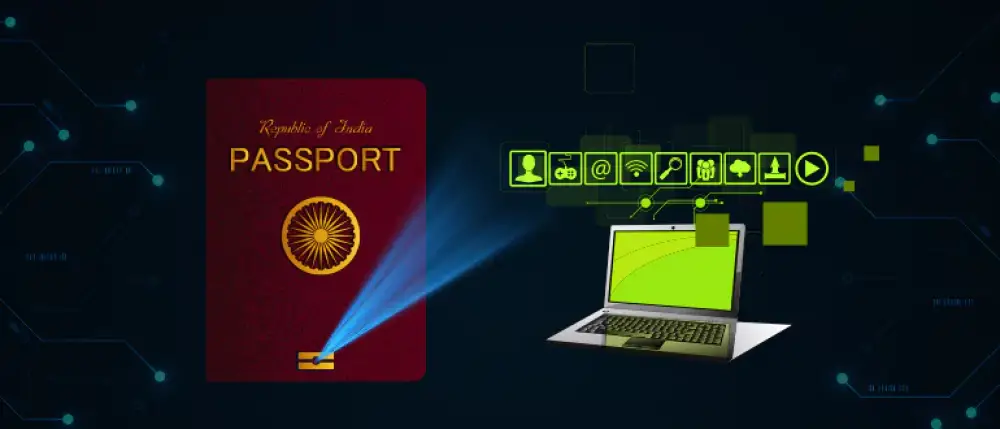Subscribe to get weekly insights
Always stay up to date with our newest articles sent direct to your inbox
Published on 5 Oct, 2023
Updated on 17 Apr, 2025
10320 Views
3 min Read

Written by Yashita Sinha
Reviewed by Akhil Pillai
0Like
Be the First to Like
Apart from your willingness to travel the world, the second most important thing you need for international travel is your passport. This crucial document contains everything from your identity to your educational background.
However, the rise in fraudulent passports has led to security concerns, as these fake documents open doors for suspicious individuals to enter countries, posing a threat to national security. To overcome this, governments worldwide have adopted e-passports, ensuring the electronic verification of traveller details and preventing unauthorized entry.
Also known as a biometric passport, e passport is a traditional passport that has an installed electronic microprocessor chip. This chip stores the traditional details of the passport holder- name, passport number date of birth and biometric information such as facial recognition data and fingerprints.
Here are the top features of an E-passport:
When you present an E-passport at the security gate, the chip gets scanned wirelessly using RFID technology. Then, the biometric data from the chip is compared with your actual face using facial recognition cameras. Lastly, your digital signature is verified and if everything matches, you’re cleared through.
Here are the top benefits that an E-passport offers
The below table shows the difference between an e-passport and a regular passport based on different features:
| Feature | Regular Passport | E-passport |
|---|---|---|
| Data Storage | Stored in a printed form | Stored electronically on a chip |
| Security Level | Lower (easier to tamper) | High ( encrypted and harder to forge) |
| Processing Speed | Slow (manual verification at gates) | Fast (automated scanning at gates) |
| Embedded Technology | No electronic data transfer | Built-in antenna for data transfer |
There’s no rocket science behind the process of applying for an E-passport. You need to follow the simple steps mentioned below:
Go to the official website at passportindia.gov.in.
On the homepage, click on the "Register Now" link. Now, fill in the details required to create a new account.
After registering, login with your new credentials.
On the dashboard, click on ‘apply for a fresh passport’. In case you already have a passport, click on ‘re-issue of passport’.
Complete the online application form by filling in accurate and personal details.
After submitting the form, click on ‘pay and schedule appointment’.
Note: Choose a convenient time and date for your appointment at the Passport Seva Kendra (PSK) or Regional Passport Office (RPO).
You’ll receive an SMS on your registered mobile number with your appointment details.
On the scheduled date, visit the Passport Seva Kendra or Regional Passport Office with the original documents required for verification.
Note: These documents usually include a birth certificate, address proof and proof of nationality.
During your visit, your fingerprints, photograph and signature will be captured for the E-passport.
After successful document verification, your new e-passport will be processed and dispatched to your registered address.
Below is the list of documents required to apply for an E-passport:
>>Read More: How to Claim for Passport Cover under the Travel Insurance Easily?
An e-passport is a convenient and hassle-free way to travel across the world. Unlike traditional passports that come with the risk of forgery and identity theft, e-passports are highly secure and ensure solid protection of your data using encryption. Therefore, before planning your next trip abroad, don’t forget to apply for an e-passport as it will make your journey easier.
Disclaimer: Plan features, benefits, coverage, and claims underwriting are subject to policy terms and conditions. Kindly refer to the brochure, sales prospectus, and policy documents carefully.
Be the First to Like
List of 10 Countries Where the Indian Rupee is Stronger Munmi Sharma in Travel Insurance Articles
इंडिया से दुबई जाने का खर्चा क्या है? जानें, वीजा से जुड़ी जरूरी बातें Munmi Sharma in Travel Tips
How to Find File Number in Passport - A Step-by-Step Guide Munmi Sharma in Passport
What Is Non-ECR Category In Passport? How to Apply in 4 Easy Steps? Munmi Sharma in Passport
Complete Step-by-Step Guide to Applying for a U.S. Visa in 2025 Care Health Insurance in Visa
8 Things to Keep in Mind Before Buying Thailand Travel Insurance Care Health Insurance in International
Top 10 Strongest Passports in the World Care Health Insurance in Passport
US Gold Card Visa: $5 Million ‘Gold Card’ Route to US Citizenship Care Health Insurance in Visa